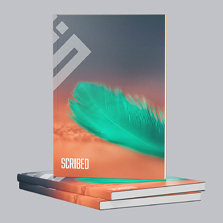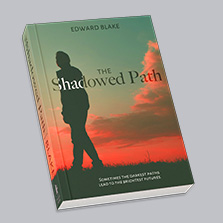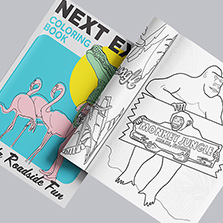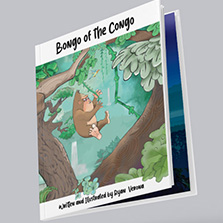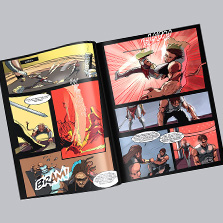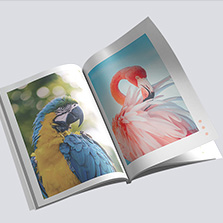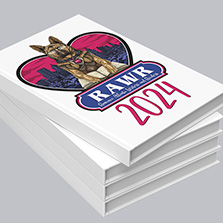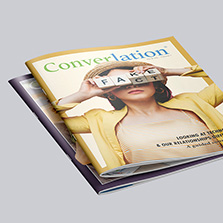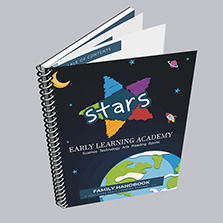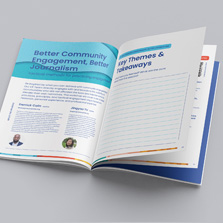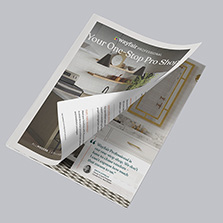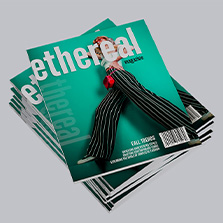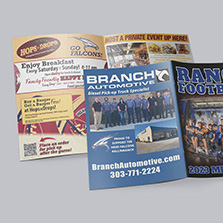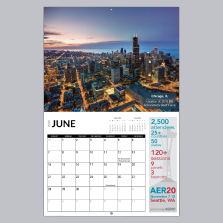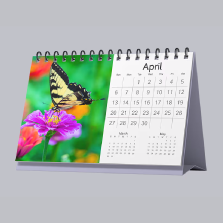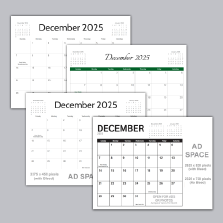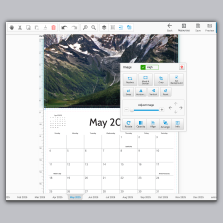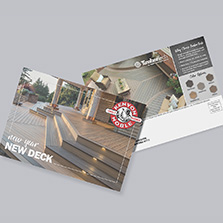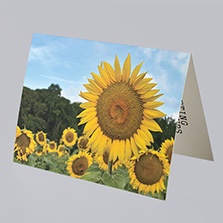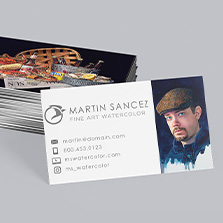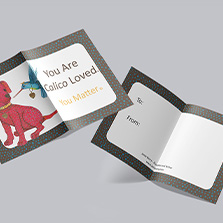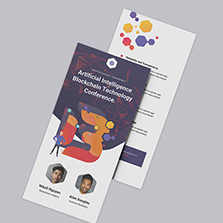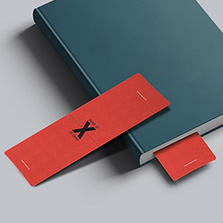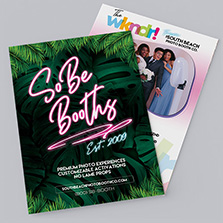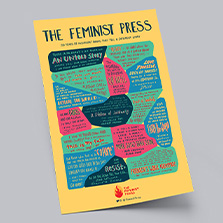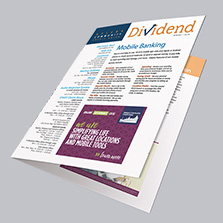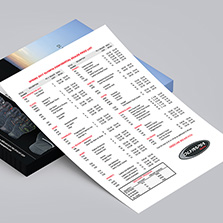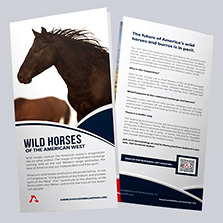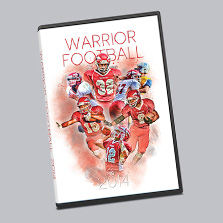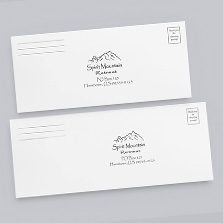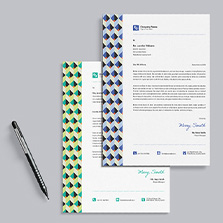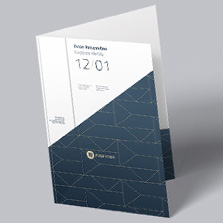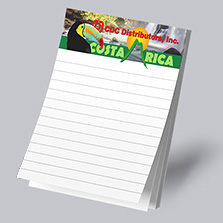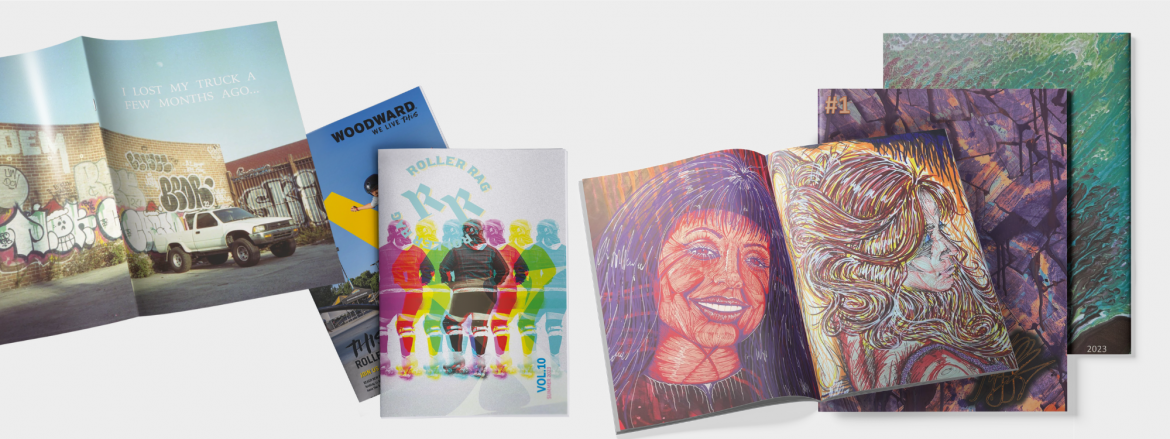
What is Saddle Stitched?
Saddle-stitching means that the sheets of paper in your booklet or calendar project are going to bound together with staples. Compared to other binding styles like Wire-O or Spiral binding, the saddle-stitching is most popular because it is cost effective and subtle. A Spiral or Wire-O binding is very visible, but staples are hardly noticed.
Paper in Saddle-Stitched Booklets
When we saddle-stitch a document the page count has to be evenly divisible by four. In the image below there are two sheets of paper. One sheet is stacked on top of the second sheet and then they are stapled in the middle and folded together. You can see that this causes a total of eight pages.
It’s important to remember that when you have a product saddle-stitched the page count must be evenly divisible by four.
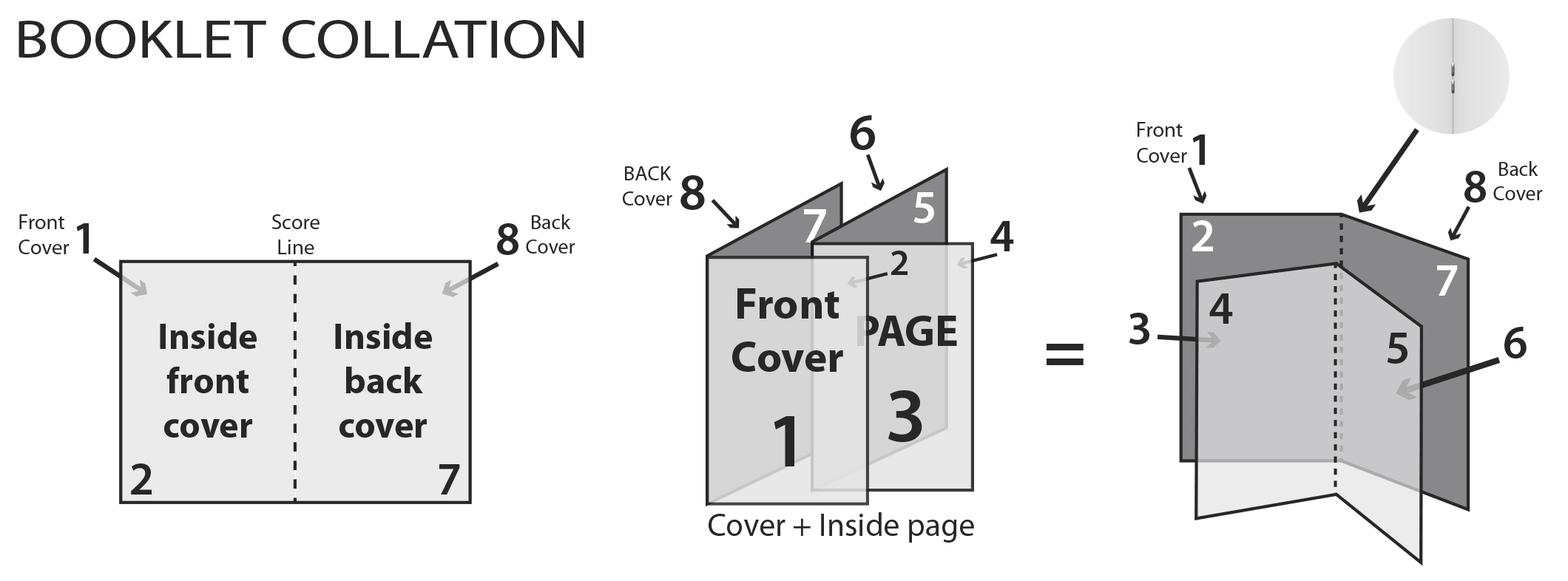
Saddle stitch binding is an ideal and economical choice for booklets with smaller page counts. We also recommend saddle stitch for publications with less than 92 pages. For page counts over 92 pages, we recommend perfect bound booklet printing. Saddle stitch booklets are great because they will lay flat and stay open when you are flipping through the pages, making it easier to read. Saddle stitch is our most popular binding type and offers the quickest turnaround time with the most affordable and cost-effective pricing.
Instant Saddle Stitch Pricing: Learn More
Instant Perfect Bound Pricing: Learn More
How Many Pages Do You Need for Saddle Stitch?
Saddle stitch binding requires that any publication has a minimum of eight pages, four pages per spread and up to 92 total pages. Saddle stitch documents need to be built in page multiples of 4 pages (8, 12, 16, etc.) because they are printed on sheets that are folded in half.
See below for a more in-depth explanation on how sheets become pages.
How you number your pages depends on the final page count. For example, in an 8-page booklet, the front cover is considered page 1 and the back of that page will be page 2 (inside front cover). The inside pages will continue in order like the diagram below as 3, 4, 5, 6 and so on. The last 2 pages will be your inside back cover (page 7) and the back cover (page 8). You can get pricing on your saddle stitch booklet by visiting our website.
As mentioned above, the saddle stitch method requires that a booklet be printed out on large sheets of paper and then folded in half. Each sheet of paper will contain 4 of the booklet’s pages.
If you are printing an 8.5” x 11” saddle stitch book, its’ pages and cover would be made from 17” x 11” sheets that are folded in half to the size of 8.5” x 11”.
First, let’s start with a single sheet of paper. It has 2 sides – a front side and a back side. Once the sheet gets folded in half, it will have 4 sides (or 4 pages). The number of sheets will depend on the final page count of the booklet.
Usually, any page count of 48 or less is considered a booklet and any job over 48 pages (with a maximum size of 92) would be considered a book. If your publication is larger than 92 pages, consider our other affordable binding options! Our most popular binding type for larger page counts is perfect binding (28 pages – 2” thick).
In Conclusion
Saddle stitching is an economical and efficient binding method. It works great for booklets, calendars, and publications with fewer than 92 pages. Its subtle yet sturdy nature makes it a popular choice because it provides a professional finish without drawing attention away from your content. Understanding the specifics of saddle stitching like the necessity of page counts being divisible by four and page counts suitable for this binding style, you can be sure you’ll have a polished and cost-effective final print product. Whether you’re looking for quick turnaround times or a booklet that lays flat for easy reading, saddle-stitching offers the perfect balance of affordability and quality. Explore our saddle-stitching options today to give your project a sleek and professional touch with PrintingCenterUSA.

